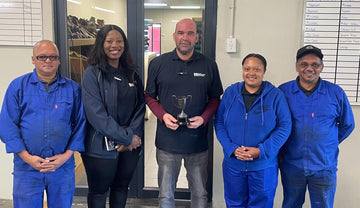
Fashion evolves rapidly, akin to the virility of a Khaby Lame clip on TikTok. It's enlightening to pause and contemplate the lasting significance of quality craftsmanship in a landscape dominated by hastily produced goods. Consider the narrative of Yvon Chouinard, the founder of Patagonia, who reminisces about the enduring durability of a carbon steel knife purchased over 50 years ago. This knife, symbolic of longevity and dependability, starkly contrasts the disposable culture fostered by fast fashion and mass-produced items. A similar narrative unfolds in Redwing Boot's "Same Old" campaign, highlighting the re-soling and re-selling of boots, a testament to the longevity of the leather used in their construction.
The Pitfalls of Fast Fashion
The allure of fast fashion lies in its accessibility and affordability, offering consumers the latest styles at a fraction of the cost. However, this convenience comes at a significant environmental and social cost. The demand for cheap clothing fuels a cycle of overconsumption and waste, contributing to pollution, resource depletion, and exploitative labour practices. Moreover, the emphasis on quantity over quality perpetuates a throwaway culture, where garments are discarded after minimal use, adding to the mounting pile of textile waste in landfills. According to Forbes Africa, the heaps of unwanted clothing have led to an environmental crisis in Ghana. In 2019, over 65 million tons of used clothing were sent to Ghana, of which about 40% remained unsold and was subsequently discarded, as the Tony Blair Institute for Global Change reported.

The Rise of Slow Fashion
In response to the shortcomings of fast fashion, a burgeoning movement known as slow fashion has gained momentum. At its core, slow fashion prioritises sustainability, ethical production practices, and enduring quality. Unlike its fast-paced counterpart, slow fashion advocates for thoughtful consumption, urging consumers to invest in timeless pieces built to last. With its durability and timeless allure, leather epitomises the ethos of slow fashion.
The Timeless Appeal of Leather
Leather has long been cherished for its durability, versatility, and timeless elegance. Unlike synthetic materials that degrade over time, well-crafted leather goods develop a natural patina that only enhances with age, embodying enduring beauty. Whether it's a timeless leather jacket, a classic pair of leather boots, or a sturdy leather bag, these pieces transcend fleeting trends, becoming cherished heirlooms passed down through generations.

Benefits of Slow Fashion
The shift towards slow fashion offers numerous benefits for consumers and the planet. By investing in quality garments, consumers can reduce their environmental footprint and minimise waste. Additionally, supporting brands that prioritise ethical production practices ensures fair wages and safe working conditions for workers across the supply chain. Moreover, slow fashion fosters a deeper connection to our possessions, encouraging mindful consumption and a renewed appreciation for craftsmanship.
Embracing a Sustainable Future
As we confront the environmental and social challenges posed by our current consumption patterns, the principles of slow fashion offer a blueprint for a more sustainable future. By choosing quality over quantity and embracing timeless pieces crafted with care, we can redefine our relationship with fashion and pave the way towards a more responsible and resilient world. So, the next time you reach for a new wardrobe staple, consider the enduring appeal of leather and join the slow fashion revolution. After all, some things are meant to last a lifetime in a world of fleeting trends.




